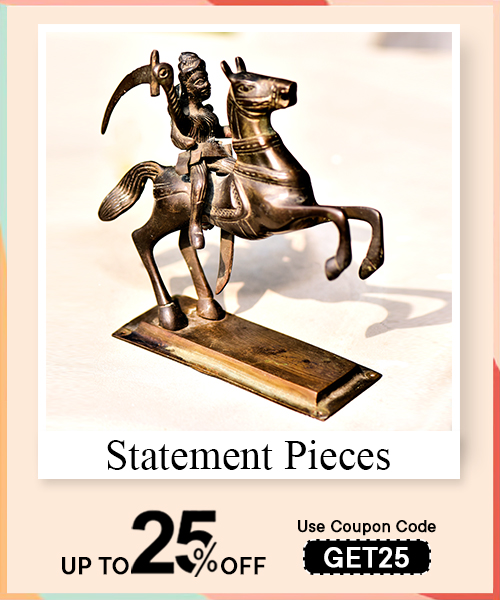Landscape painting is the art of portraying natural scenes, such as mountains, valleys, lakes, fields, forests, and coastlines. landscape artworks can focus solely on nature or may also include human-made elements like buildings or figures, Learn how to capture the beauty of nature, from the changing light to the perfect colors, and discover how to bring your outdoor scenes to life on canvas.
Landscape is a painting of land and water, mountains and valleys, trees and rivers, a forest etc. It depicts the environment and at times conveys the artist’s feelings towards the physical surrounding. As it is oriented exclusively in nature, the landscape may incorporate people’s influence in the form of architecture or agriculture which unites people and the landscape. Using different techniques, choose colours and stiles, artists can express mood or the atmosphere that is present in landscape. This means therefore that apart from being a depiction of nature, it also acts as a way for artists to paint what they see or want to see on this world. them.
The origin of history of landscape began from prehistoric ages or more precisely from ancient period where it was also a part of art but it started from the renaissance period when artists started dedicating and focusing on nature. Landscape painting first appeared as an additional story within a large story, painted for example by Leonardo da Vinci, and the 17th century became the era of independent productions covering the topic, already with help of refined professionals like Jacob van Ruisdael or Claude Lorrain.
Romania and other movements of the 18th and 19th centuries react to the introductive concepts of the Enlightenment, turning to a new focus to emotional and atmospheric aspects of nature leading to many different styles. Landscape painting still remains a favorite style with artists and has embraced many trends, opting to conform with the contemporary styles and trends to include aspects such as trendy modes of transport.
Read More : Watercolor Painting: Techniques, History, and Contemporary Applications
The following is a general description of the style common to most areas of landscape painting: Landscape painting is the technique of painting natural scenery and deals with light, color, and atmosphere. Compositional perspective is useful when artists want to bring viewers into a scene and make it look realistic. It can have close components, mid components and distant components giving the creation depth and scale. Text and background colors rage from bright to pastel depending on the feeling that the artist wishes to portray. Moreover, most portrayed scenes are the contrast of the dark and light, be it painting representing the change of weather or the time periods of a day. This genre is also distinguished by its ability to evoke emotions and reflect the artist's relationship with nature, making each piece a unique interpretation of the environment.
Landscape art can be categorized based on the type of art which is as follows; Natural scenes depict only outdoors, therefore include images of mountains, trees, and water sources or rivers. Landscape urbanization portrays the densities portraying the buildings and assimilating the works of nature. Abstract constitutes challenge the conventional forms by evoking feelings with color and shapes. Historical landscapes include natural landmarks with history or legends attached, to give stories to the place. Second, Geometric and Divisionist champions the idea of painting en plein air as one paints and makes the artwork at the site where these changes occur. All of them exist for different purposes of artwork and helps the artists to depict the landscape with personal, cultural, and emotional comments.
Landscape painting has its unique characteristics, which specifies that the major theme of such work is nature and the out-of-doors. While portraiture is otherwise the exploration of humans and their feelings, landscape, on the other hand, is the orientation of man and everything around him. However, there is still life as another category that depicts objects and beings that are devoid of the energy compared to the active and vast nature of landscapes.
Textured art is associated with nonrepresentational shapes and colors and, in contrast, landscape art depicts real-life scenery to at least some extent though it may not be very rigorous. Also, such type of compositions as gory and mythological paintings rely on narratives in figures and events. On the other hand, landscape painting seems to inspire the contemplation of and the passion for the wonderful opportunity of getting to know more diverse pieces of Earth.
A thematic or systematic representation of the scenes of the external world in art is usually defined as landscape painting, and they depict such generalized images as nature, beauty, and man in relation to nature. Classic topics are rural and quiet landscapes, grandiose rocks, calm water bodies, colorful and lively forests with presenting certain feelings or moods.
Some depict the changing times; for instance, the alteration of weathers, and the resultant changing beauty of nature. Some of the landscapes also depict solitude or contemplation or the romantically imagined heroic essence of the picturesque in the eighteenth century. Other subjects that have featured show social and political integration; protection of environmental and physical development, particularly, urbanization. Ultimately, landscape painting serves as a canvas for artists to express their thoughts and feelings about nature and humanity's place within it.

In landscape painting, common materials include acrylics,
Oils or watercolors, each offering unique textures and finishes. Brushes of various sizes, palette knives, and sponges are essential tools for applying paint. Canvas or watercolor paper serves as the base, while a palette is used to mix colors. Additional tools like easels, turpentine (for oil paints), and masking tape may be helpful. For outdoor landscapes, portable supplies like field easels and sketchbooks allow artists to capture scenes en plein air. Selecting quality materials contributes significantly to the overall success of a landscape painting
In landscape painting, standard techniques include layering, glazing, and blending, which create depth and texture. Artists often use wet-on-wet or dry-brush techniques, such as soft skies or detailed foliage, to achieve different effects. Specialized techniques may involve using palette knives for impasto effects or sgraffito to reveal underlying layers. Scumbling can create atmospheric effects, while glazing adds luminosity. Mastering these techniques allows artists to interpret landscapes uniquely, enhancing their ability to convey mood and emotion in their work.
Materials and techniques play a crucial role in determining the final appearance of a landscape painting. The choice of medium—whether oil, acrylic, or watercolor—affects texture, drying time, and color vibrancy. For instance, oil paints allow for rich, layered textures, while watercolors create soft, translucent effects. Techniques like glazing can add depth and luminosity, while bold brushwork can convey movement and energy. Additionally, the application method, such as wet-on-wet or dry-brush, influences the painting's overall feel. Together, these choices help artists express their vision and evoke specific emotions in viewers.
To develop your own style in landscape painting, start by experimenting with different materials and techniques to see what resonates with you. Study the works of various artists to identify elements you admire, such as color palettes or brushwork styles. Practice regularly, focusing on personal interpretations of landscapes rather than strict realism. Incorporating unique elements—like unusual compositions or color choices—can help define your style. Don’t hesitate to take risks and make mistakes; each experience contributes to your growth as an artist. Ultimately, your style will evolve as you express your individual perspective.
In landscape painting, common colors include greens for foliage, blues for skies and water, and earth tones for land and structures. Warm colors like yellows and oranges can evoke feelings of warmth and sunlight, while cool colors like purples and blues often create a sense of calm or distance. The strategic use of color can dramatically influence mood; for instance, a vibrant sunset can convey warmth and tranquility, while a stormy sky may evoke tension and drama. Understanding color theory and emotional responses to colors allows artists to enhance the atmosphere of their landscapes effectively.
In landscape painting, composition, perspective, and balance are vital for creating a visually engaging piece. Composition refers to the arrangement of elements within the artwork; a well-composed landscape guides the viewer’s eye and highlights focal points. Perspective helps convey depth and distance, making the scene more realistic; techniques like linear perspective or atmospheric perspective can create a sense of space. Balance ensures that visual weight is evenly distributed, preventing one area from overwhelming the others. Together, these elements contribute to the overall harmony and effectiveness of a landscape painting, enhancing its impact on viewers.
Landscape painting originated in ancient civilizations, with early examples found in Egyptian tomb paintings and Roman frescoes that depicted natural scenery. However, it truly began to flourish during the Renaissance in Europe, where artists like Leonardo da Vinci and Raphael included landscapes in their works. The genre gained prominence in the 17th century with Dutch painters, such as Jacob van Ruisdael, who focused on detailed, realistic portrayals of nature. Over time, landscape painting expanded to include various styles and interpretations, reflecting the changing relationship between humanity and the natural world.
Landscape painting has evolved significantly over time, adapting to cultural, social, and artistic movements. In China, landscape painting dates back thousands of years and emphasizes harmony with nature, often featuring mountains and water. In Europe, the transition from realistic depictions in the Renaissance to the romanticized landscapes of the 19th century reflected changing attitudes towards nature. The Impressionist movement introduced new techniques and a focus on light and color, further transforming the genre. Today, landscape painting continues to evolve, incorporating modern techniques and diverse influences from around the globe, reflecting contemporary issues and perspectives.
Yes, there are numerous regional variations and styles of landscape painting that reflect local cultures and traditions. In Chinese landscape painting, for instance, artists use ink and brush techniques to convey philosophical ideas about nature and humanity's place within it. In contrast, Western landscape painting has seen styles like Romanticism, which emphasizes emotion and dramatic scenery, and Impressionism, which focuses on capturing the effects of light. In India, landscape painting is often vibrant and includes elements of mythology and spirituality. These regional styles demonstrate how cultural contexts shape the representation of landscapes.
Globalization has significantly influenced the spread and development of landscape painting by facilitating cross-cultural exchange and collaboration. Artists can now access diverse influences, techniques, and materials from around the world, leading to new interpretations of landscapes. Art movements and styles have merged, creating hybrid forms that reflect a global perspective. Additionally, online platforms and social media allow artists to showcase their work to a wider audience, breaking down geographical barriers. This interconnectedness encourages dialogue between different artistic traditions, enriching the landscape painting genre and fostering innovation.
Some renowned landscape painters include Claude Monet, known for his iconic series of water lilies and his depiction of the Japanese bridge at Giverny; John Constable, celebrated for works like "The Hay Wain" that capture the English countryside; and Vincent van Gogh, famous for expressive landscapes like "Starry Night." Other notable artists include Caspar David Friedrich, whose Romantic landscapes evoke deep emotions, and Georgia O'Keeffe, known for her striking interpretations of the American Southwest. Each of these artists has significantly influenced the genre, pushing the boundaries of landscape painting.
These renowned landscape painters have contributed to the evolution of the genre by introducing innovative techniques, perspectives, and emotional depth. Claude Monet's use of color and light transformed the way landscapes were perceived, leading to the development of Impressionism. John Constable’s attention to the English countryside brought realism and emotional connection to nature. Vincent van Gogh's expressive brushwork and vibrant colors conveyed the emotional experience of landscapes. By challenging traditional representations and emphasizing personal vision, these artists expanded the boundaries of landscape painting, influencing countless others in their artistic journeys.
Yes, there are many contemporary landscape painters making significant contributions to the field. Artists like Julie Mehretu blend abstract and representational elements to explore themes of geography and history in their landscapes. Others, like David Hockney, experiment with digital technologies to create vibrant, contemporary interpretations of nature. Additionally, artists such as Gregory Crewdson use staged photography to capture hauntingly beautiful landscapes that explore the relationship between humans and their environment. These contemporary artists bring fresh perspectives to landscape painting, engaging with current social and environmental issues while pushing the boundaries of the genre.
Famous landscape paintings have profoundly influenced modern art movements by challenging conventional perceptions and inspiring new techniques. The Impressionists, for instance, drew from the works of earlier landscape artists to develop their focus on light, color, and spontaneous brushwork. The emotional depth in Romantic landscapes laid the groundwork for Expressionism, encouraging artists to convey personal feelings through nature. Moreover, the exploration of abstraction in modern art can trace its roots to the manipulation of form and color in landscape paintings. Overall, these influential works have paved the way for continued innovation in contemporary art.
Landscape painting is highly regarded in modern society for its ability to evoke emotion and convey the beauty of nature. Many appreciate these artworks for their aesthetic appeal, as they can transform spaces and create a sense of tranquility. Moreover, contemporary viewers often value landscape paintings as reflections of environmental issues, prompting discussions about conservation and the relationship between humanity and nature. Art enthusiasts and collectors seek out landscape paintings for their historical significance and cultural narratives, ensuring their relevance continues in today’s art scene.
Technology has greatly impacted both the creation and appreciation of landscape painting. Digital tools and software allow artists to experiment with colors and compositions in ways that traditional methods cannot. Additionally, online platforms enable artists to share their work with a global audience, reaching collectors and enthusiasts far beyond their local communities. Virtual galleries and social media have changed how art is displayed and marketed, making it easier for viewers to discover and appreciate landscape paintings. This technological evolution fosters greater engagement and dialogue around the genre.
Landscape painting plays a crucial role in art education by teaching students about color, composition, and techniques while encouraging observation and interpretation of the natural world. It serves as a valuable tool for exploring historical contexts, artistic movements, and cultural narratives. Additionally, landscape painting contributes to cultural preservation by documenting environments and landscapes that may change over time due to urbanization or climate change. Through this documentation, artists help preserve memories and stories associated with specific places, enriching cultural heritage and encouraging appreciation for the natural environment.
Landscape paintings can enhance home or office decoration by adding visual interest and a sense of calm. In living spaces, they can serve as focal points above furniture or in hallways, bringing the beauty of nature indoors. In offices, landscape paintings can create a relaxing atmosphere that promotes productivity and well-being. Consider using larger canvases for spacious areas and smaller pieces for cozy nooks. Pairing landscape paintings with complementary decor, such as natural materials or earth-toned furnishings, further integrates them into the overall design, creating a harmonious and inviting environment.
In modern design, landscape paintings can be framed in sleek, simple frames and displayed in clusters to create a gallery wall effect. For traditional interiors, ornate frames can enhance the artwork’s classic appeal. In minimalist spaces, large-scale landscape paintings can act as statement pieces, providing a stark contrast to the surrounding simplicity. Incorporating landscape paintings into unexpected places, such as above a bed, in a dining area, or even in bathrooms, can add charm and personality to any room. Mixing styles, such as pairing contemporary landscape art with vintage furniture, can also create a unique look.
Landscape paintings can beautifully complement special occasion or festival decorations by adding thematic elements that resonate with the celebration. For instance, during harvest festivals, landscapes depicting fields or nature can enhance the seasonal ambiance. Incorporating landscape art into event decor, such as weddings or parties, can create a serene backdrop that fosters a relaxed atmosphere. Using smaller landscape pieces as centerpieces or accent decorations on tables adds an artistic touch. Additionally, seasonal landscapes can be rotated to reflect different celebrations throughout the year, keeping the decor fresh and relevant.
Yes, there are Vastu and Feng Shui guidelines for placing landscape paintings in the home or office to promote positive energy. According to Vastu, landscape paintings depicting flowing water should be placed in the north or east direction, as they attract prosperity and well-being. In Feng Shui, artworks that convey movement, such as landscapes with water, should be hung in areas where they can inspire flow and positivity. Avoid landscapes that depict stagnation or chaos, as they may create negative energy. It’s important to choose images that resonate personally and evoke positive feelings.
Themes in landscape painting that enhance positive energy according to Vastu principles include serene water scenes, lush greenery, and vibrant skies. Paintings that depict gentle flowing rivers or peaceful lakes symbolize abundance and tranquility. Lush landscapes with trees and flowers are believed to bring vitality and health to a space. Bright, clear skies in landscape paintings evoke optimism and happiness. Choosing artworks that represent harmony with nature aligns with Vastu principles, creating environments that foster positivity and well-being, making them ideal for homes and workspaces.
Read More : History, Techniques, and Impact of Abstract Painting
Yes, landscape painting is a popular choice for gifting due to its universal appeal and ability to evoke emotions. These artworks can resonate with recipients, making them meaningful gifts. A well-chosen landscape painting can enhance a person's living space, bringing the beauty of nature indoors. Whether it’s a serene countryside scene or a vibrant sunset, landscape paintings cater to diverse tastes and preferences. Their aesthetic versatility allows them to fit into various decor styles, making them thoughtful gifts for art lovers, nature enthusiasts, or anyone looking to beautify their environment.
When selecting a landscape painting as a gift, consider the recipient’s personal taste and style. Pay attention to the colors and themes they prefer, as well as the overall decor of their space. The size of the painting is also important; ensure it fits well in the intended location without overwhelming the area. Additionally, consider the artist’s style—whether it’s traditional, modern, or abstract—as this can impact how the gift is received. Lastly, think about the emotional connection the painting may evoke; a landscape that resonates personally with the recipient will make the gift even more special.
To determine the resale value of a landscape painting, start by researching recent sales of similar works by the same artist or in the same style. Auction house results and online art marketplaces can provide valuable pricing information. Consulting with art appraisers or galleries can also yield insights into the painting’s value based on market trends. Factors like size, medium, and the painting's overall appeal play a role as well. It’s important to consider both emotional and market value to arrive at a realistic resale price.
Several factors influence the resale value of landscape paintings. The artist's reputation is paramount; well-known artists typically command higher prices. The condition of the painting also affects its value; paintings that are well-preserved or in excellent condition are more desirable. Provenance, or the painting’s history of ownership, can add to its value, especially if it has been part of a notable collection. Other factors include market demand, style, size, and even the medium used. Understanding these aspects helps sellers set appropriate prices.
To find potential buyers or collectors interested in landscape paintings, start by networking within local art communities, galleries, and exhibitions. Online platforms like social media, art marketplaces, and collector forums can help you reach a wider audience. Joining art groups and attending events or fairs focused on landscape art can connect you with like-minded individuals. Additionally, consider building relationships with art dealers or galleries that specialize in landscape paintings, as they can facilitate sales and introduce you to potential buyers.
Yes, there are several legal considerations when reselling a landscape painting. First, be aware of tax implications; sales tax may apply depending on your location, and you may need to report profits on your income tax. Ensuring the painting’s authenticity is crucial, as selling counterfeit or misrepresented art can lead to legal issues. Additionally, understanding copyright laws is important, especially if you are reproducing or altering the work. Consulting with a legal expert in art transactions can help you navigate these considerations.
To authenticate and appraise a landscape painting, start by researching the artist and comparing the work to known pieces. Consulting with a certified appraiser or art historian can provide expert insights into authenticity and value. Documentation such as certificates of authenticity, previous appraisals, or provenance records can also aid in establishing legitimacy. Condition reports detailing any damage or restoration work are essential for an accurate appraisal. Engaging with reputable galleries or auction houses for professional opinions can help ensure a fair and credible assessment.
Preparing a landscape painting for resale involves several steps. Start by cleaning the painting gently with a soft, dry cloth to remove dust and dirt. If the painting shows signs of wear or damage, consider consulting a professional restorer to address any issues without compromising its integrity. Proper framing enhances presentation; choose a frame that complements the artwork and fits the buyer’s aesthetic preferences. Including protective glass or acrylic can safeguard the painting during display. Documenting the painting’s condition before and after preparation is essential for potential buyers.
When reselling a landscape painting, documentation should include a provenance record detailing the artwork's history, including previous owners and exhibition history. A condition report outlining any damages, restorations, or imperfections is crucial for transparency. Including photographs of the painting in its current state can provide visual context for buyers. Certificates of authenticity, appraisals, and any relevant artist information should also be part of the documentation. This comprehensive record enhances buyer confidence and can contribute to the painting's perceived value during the sale.
Landscape paintings should be cleaned gently to avoid damage. Use a soft, dry cloth to dust the surface, taking care not to rub too hard, especially on textured areas. Avoid using water, cleaners, or solvents, as they can damage the paint or varnish. If necessary, consult a professional conservator for more thorough cleaning. Additionally, keep the painting in a stable environment, away from direct sunlight, which can fade colors, and maintain a consistent temperature and humidity level. Regularly check the artwork for signs of wear or damage to ensure its longevity.
Environmental factors significantly impact the condition of landscape paintings. High temperatures can cause paint to crack or warp, while excessive humidity can lead to mold growth or damage to the canvas or wood panel. Direct sunlight can fade colors over time, diminishing the artwork's vibrancy. Ideally, paintings should be kept in a climate-controlled space, with moderate temperature and humidity levels. Using UV-filtering glass in frames can also help protect the painting from harmful light exposure, ensuring it remains beautiful for years to come.
Consider professional restoration for your landscape painting when you notice significant damage, such as tears, abrasions, or discoloration that affects its visual appeal. Other signs include flaking paint, water damage, or mold growth. If the painting has sentimental or significant financial value, it’s wise to seek expert help before attempting any repairs. Professionals can assess the condition and recommend appropriate restoration techniques to preserve the artwork’s integrity. Timely restoration can prevent further deterioration, ensuring the painting retains its beauty and value.
Common restoration techniques for landscape paintings include cleaning, varnish removal, and inpainting (repainting areas where paint has been lost). Professionals may also repair tears or re-stretch canvases. To find a reputable restoration expert, seek recommendations from local art galleries, museums, or universities with art programs. Online directories and associations, such as the American Institute for Conservation (AIC), can also help locate certified conservators. Always review a professional's portfolio and client testimonials to ensure their expertise aligns with your painting’s needs.
The ideal storage conditions for a landscape painting involve a cool, dry, and dark environment. Maintain a stable temperature (ideally between 65-70°F) and humidity levels around 40-50% to prevent warping or mold growth. Store the painting upright or flat, depending on its size, and use protective padding like acid-free tissue paper or bubble wrap to avoid scratches. Avoid placing the painting near heat sources or areas with fluctuating temperatures, such as attics or basements. Keeping the artwork in a protective frame can also help shield it from dust and physical damage.
To protect your landscape painting from pests, mold, or accidental damage, ensure it is stored or displayed in a clean, dry environment. Regularly check for signs of pests, such as small holes or webbing, and keep the area around the painting free of dust and debris. Use a dehumidifier in areas prone to moisture to reduce mold risk. For accidental damage, hang the painting securely and out of high-traffic areas. Consider using protective glass or acrylic in the frame to shield it from dust and potential impact.
Yes, insuring your landscape painting is advisable, especially if it holds significant financial or sentimental value. When choosing insurance, consider the painting's appraised value and whether the policy covers loss, theft, and damage. Look for a specialized art insurance provider, as they understand the unique needs of art collectors. Ensure that the policy includes coverage for restoration costs and any potential depreciation. Regularly update your policy and appraisals to reflect changes in market value, ensuring adequate protection for your investment.
Buyers are influenced by several factors when choosing a landscape painting. Personal taste is paramount; buyers often look for styles, colors, and themes that resonate with them. The reputation of the artist also plays a crucial role; established artists typically command higher interest. Additionally, the painting's size and how it fits into a buyer's space can affect decisions. Emotional connection to the artwork and its aesthetic appeal are also significant. Lastly, price and perceived value, including any investment potential, are key considerations for many buyers.
Yes, landscape paintings can be considered good investments, particularly if they are created by well-known or emerging artists. Their value is influenced by factors such as the artist's reputation, the rarity of the piece, and market demand. Historical significance and the painting's condition also play a role. Additionally, trends in the art market can impact investment potential; for instance, certain styles or periods may gain popularity, increasing the value of corresponding works. Buyers should research market trends and seek professional advice when investing in landscape art.
The typical buying process for a landscape painting involves several steps. In galleries, buyers usually browse the collection, ask questions about the artwork, and may request information about the artist. Once they find a piece they like, they can negotiate the price and complete the purchase. Online, the process is similar: buyers explore listings, read descriptions, and view images. It's important to check seller ratings and return policies before buying. Payments are often made through secure platforms, and shipping arrangements are confirmed before finalizing the transaction.
Buyers can research and find landscape paintings through various avenues. Visiting local galleries and art fairs allows for direct interaction with artworks and artists. Online platforms like Saatchi Art, Artsy, and Etsy provide extensive collections and filtering options to match buyer preferences. Social media can also be a valuable tool for discovering new artists and trends. Additionally, art magazines, blogs, and auction house catalogs can offer insights into current market values and popular styles. Networking with art enthusiasts and joining collector groups can further enhance research opportunities.
Certain themes and styles of landscape painting tend to be particularly popular among buyers. Impressionistic landscapes, with their vibrant colors and loose brushwork, often attract collectors looking for a sense of movement and emotion. Natural scenes depicting serene environments, such as forests, mountains, or seascapes, are also in high demand due to their calming effects. Additionally, contemporary styles that incorporate abstract elements or mixed media can appeal to modern collectors. Seasonal themes, such as autumn foliage or winter landscapes, can also capture buyer interest depending on current trends.
When commissioning a landscape painting, buyers should consider several factors. First, clarify the specific vision for the artwork, including preferred colors, style, and size. Choosing the right artist whose style aligns with your vision is crucial; reviewing their portfolio can help ensure a good fit. Discuss the timeline and budget upfront to avoid misunderstandings. Additionally, be clear about any personal significance the landscape should convey. Communication throughout the process is key to achieving a satisfactory outcome, so maintain an open dialogue with the artist.
To ensure a safe and secure online purchasing experience for landscape paintings, buyers should start by researching the seller. Look for reputable online galleries or marketplaces with positive reviews and clear return policies. Using secure payment methods, such as credit cards or PayPal, adds an extra layer of protection. Always check for secure connections (https://) on the website. Before completing a purchase, read product descriptions carefully and request additional images or details if needed. Keeping a record of all communications and transaction receipts can also help resolve any potential issues.
Artists specializing in landscape painting can explore various career opportunities. They may work as independent artists, selling their works through galleries, art fairs, or online platforms. Many landscape painters also take commissions for custom pieces. Teaching art, whether through workshops, community classes, or academic institutions, can provide additional income. Some may find roles in art therapy, using their skills to help others express emotions through art. Additionally, landscape painters can collaborate with interior designers, architects, or businesses seeking artwork for commercial spaces, expanding their market reach.
Building a successful career as a landscape painter involves several steps. Start by developing your skills through consistent practice and education, whether through formal training or self-study. Create a diverse portfolio that showcases your unique style and versatility. Networking with other artists, galleries, and art collectors can open doors to opportunities. Participate in exhibitions and art fairs to gain visibility and connect with potential buyers. Utilize social media and online platforms to promote your work and engage with a broader audience. Stay persistent and adaptable, continuously seeking growth and learning in your artistic journey.
Working as a landscape painter presents both challenges and rewards. One major challenge is the competitive nature of the art market, which can make it difficult to gain recognition and sell work. Financial instability is also common, especially for emerging artists, as income can fluctuate. However, the rewards can be significant; creating art allows for self-expression and fulfillment. Successful sales and positive feedback can boost confidence and motivation. Additionally, building a community and connecting with art lovers can lead to meaningful relationships and opportunities, enriching both personal and professional life.
Landscape painters can leverage digital platforms and social media to reach wider audiences by creating engaging online content. Use platforms like Instagram, Facebook, and Pinterest to showcase your artwork, share behind-the-scenes processes, and connect with followers. Creating a professional website or online portfolio can be a hub for your work and information about upcoming exhibitions. Engaging with online art communities, participating in challenges, and collaborating with other artists can enhance visibility. Consistent posting and interaction with your audience help build a loyal following and increase opportunities for sales and commissions.
To create a strong portfolio as a landscape painter, focus on showcasing your best work that reflects your unique style and vision. Include various pieces highlighting your skills, techniques, and subject matter. High-quality photographs of your work are essential for both online and print portfolios. As for brand identity, consider what sets you apart from other artists and how you want to be perceived. Develop a cohesive visual style across your portfolio, social media, and marketing materials. Consistent messaging about your artistic journey and values will resonate with potential buyers and collectors.
Landscape paintings can enhance theme-based home or office designs by complementing the overall aesthetic. For a nature-themed space, select vibrant landscapes that echo the colors and textures of the outdoors. Choose abstract or contemporary landscape pieces with clean lines and muted colors in a modern or minimalist design. To create a cohesive look, use similar frames or color palettes to hang the paintings in groupings that relate to the theme. Additionally, consider the scale of the artwork; larger paintings can serve as focal points, while smaller pieces can be grouped for visual interest.
Landscape paintings can enhance various spaces by adding warmth and personality. In a living room, larger landscape pieces can serve as focal points above sofas or mantels, inviting conversation and creating a cozy atmosphere. Consider more miniature, welcoming landscapes for entryways that set a positive tone for guests. In offices, choose calming landscapes to promote relaxation and focus; these can reduce stress and enhance productivity. The artwork's placement should consider natural light and viewing angles to ensure that the paintings are appreciated throughout the day.
Modern landscape painting trends include using bold colors and abstract interpretations, moving away from traditional realism. Many contemporary artists are experimenting with mixed media, combining paint with collage elements to create textured landscapes. There is also a growing focus on environmental themes, reflecting concerns about climate change and nature conservation. Minimalist landscapes, featuring simplified forms and limited color palettes, are gaining popularity for their calming effects. Additionally, digital art forms are becoming more prevalent, allowing artists to create unique and innovative landscape pieces that can be shared online.
Customizing a landscape painting involves understanding the preferences of the client or yourself. Start by discussing themes, colors, and specific elements that are meaningful to the buyer. Consider incorporating personal touches, such as significant locations or color schemes that match the client's decor. Artists can provide sketches or digital mock-ups to visualize the concept before finalizing the piece. Regular communication throughout the process ensures that the painting aligns with expectations. Custom commissions can result in deeply personal artworks that resonate emotionally and fit perfectly into the intended space.
Read More : Exploring the Art of Oil Painting: Techniques, History, and Influence
Landscape painting holds significant cultural value in festivals and rituals, often reflecting the natural environment's beauty and importance to specific communities. In many cultures, landscapes depicted in art can symbolize the spiritual connection to the land and its resources. During celebrations, landscape paintings can be used as decorative elements, enhancing the atmosphere and evoking emotions related to heritage and tradition. They also serve as reminders of cultural narratives and collective memories, fostering a sense of belonging and continuity within a community. By celebrating landscapes, cultures honor their relationship with nature and the environment.
















